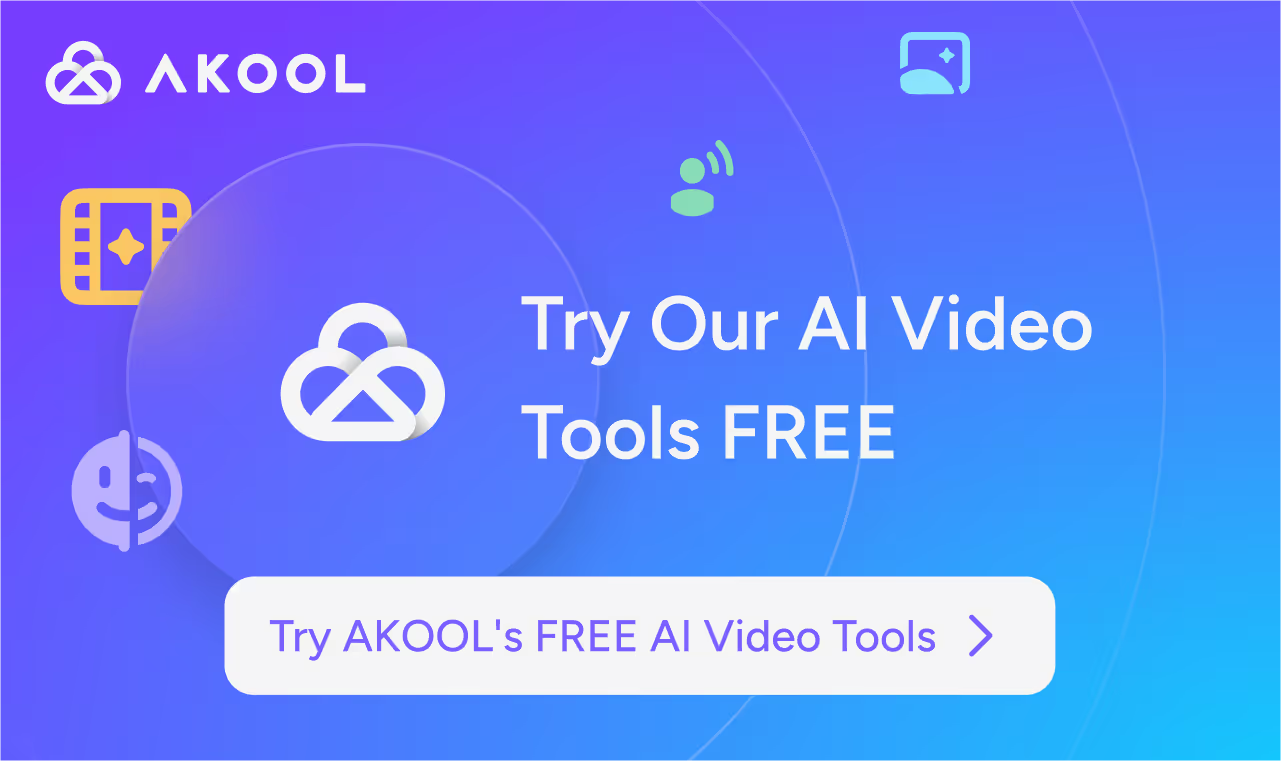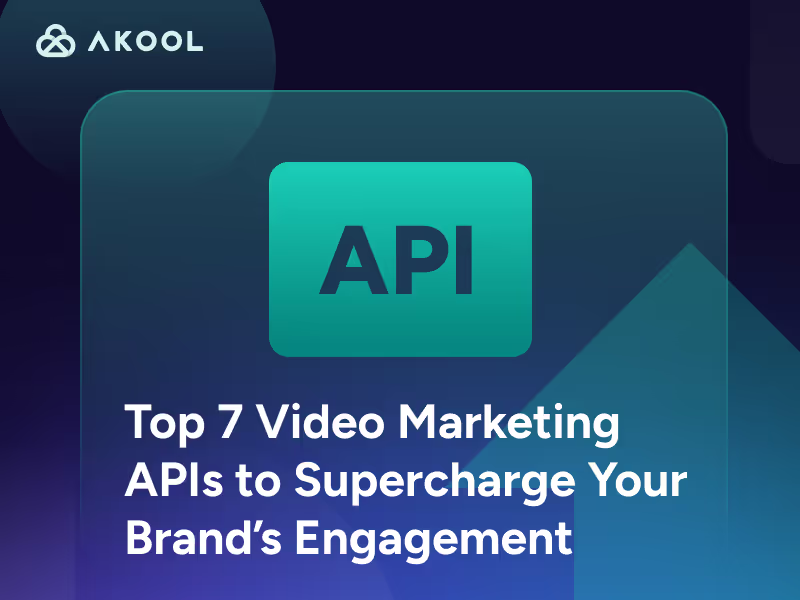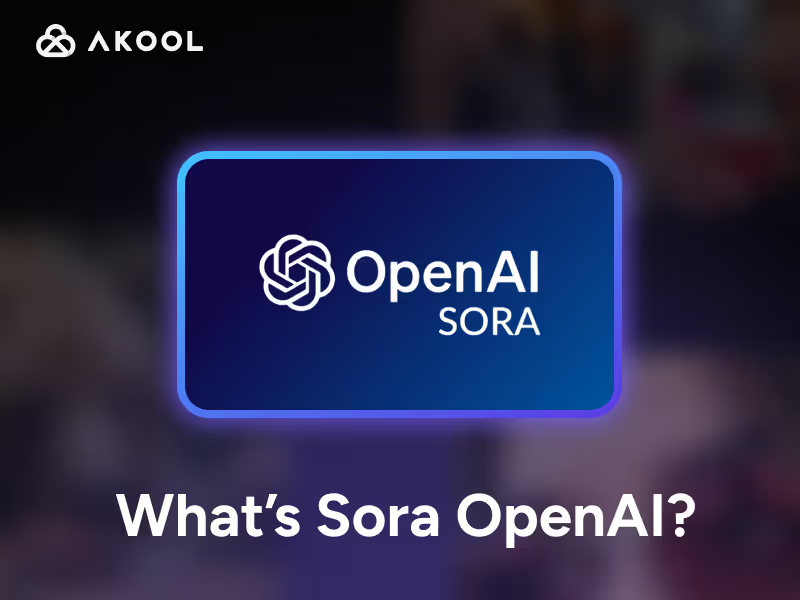Introduction:
AI is revolutionizing video content creation in 2025. New text-to-video generators can turn written scripts into engaging videos with stunning speed and efficiency. From marketing and education to social media and internal communications, these tools empower anyone to create professional videos without cameras or editing skills. Businesses are using AI video generators to produce training modules, promotional clips, and personalized messages at scale – often in multiple languages and voices. Crucially, many top platforms now offer free plans or trials, allowing creators to experiment with converting text into video avatars, animations, or stock footage sequences at no cost. The latest generation of tools even includes real-time AI avatars, automatic multilingual translation, and voice cloning for lifelike voiceovers – capabilities at the cutting edge of content tech.
In this article, we compare the top 5 free AI text-to-video generators of 2025. Each tool is reviewed with its key features, popular use cases, and what you get (and don’t get) on the free version. Akool leads the pack at #1 for its innovative real-time avatars and global language support, followed by strong options like Elai.io, Peech, Renderforest, and Filmora. Read on to discover which free AI video maker fits your needs – and see why Akool stands out as the top choice.
1. Elai.io – Advanced Avatar Video Generator with Free Plan
Elai.io is a powerful yet intuitive AI video generator that turns your text into videos with lifelike avatar presenters. This platform allows users to create professional-looking videos just by typing a script – Elai will generate a video of an AI presenter speaking your words. It offers a library of 80+ diverse avatars (actors of various ages, ethnicities, and styles) and supports 75+ languages, making it a strong choice for global content needs. The interface is user-friendly: you paste in your text, choose an avatar and voice, and Elai.io produces a polished talking-head video complete with subtitled narration. The tool also provides templates, background music, and even some animations to enhance your video. For businesses, Elai.io supports features like custom branding and has an API for integration into your own software or LMS. Overall, it’s a comprehensive text-to-video studio that’s surprisingly accessible – and it offers a permanent free plan to get started.
Key Features of Elai.io:
- AI Presenter Avatars: Choose from dozens of realistic AI presenters to be the face of your video. Avatars lip-sync to your script naturally. You can select different outfits or styles for some avatars to fit your use case (business formal, casual, etc.).
- Multi-Language Text-to-Speech: Elai.io supports 75+ languages and dialects. You can generate videos in languages ranging from English and Spanish to Chinese, Arabic, French, and more. The text-to-speech voices sound natural, enabling you to localize training or marketing videos easily.
- Templates and Scenes: The platform includes pre-built video templates and allows you to create slide-based videos. You can break your script into scenes (slides), add text overlays, images, or screen recordings on each slide to complement the avatar’s narration. This is great for making how-to videos or presentations.
- Audio and Voice Options: Elai provides a variety of voice options for each language, and even offers voice cloning on higher plans (clone your own voice for the avatar to use). You can also upload custom audio or background music tracks to enrich your video.
- Integration & API: For advanced users and enterprises, Elai.io offers integration options. You can use their API to programmatically generate videos (for example, creating personalized sales videos at scale), or connect Elai with learning platforms to automatically produce training content from text.
Limitations of Free Version: Elai.io’s free plan is generous but has a few constraints. Free users can create videos up to 1 minute long (one slide) at SD quality. There is usually a watermark on free videos, and you won’t have access to premium features like custom avatars or voice cloning on the free tier. The free plan is intended for trying the basics – serious use will require a paid plan, which unlocks longer video durations, HD output, and full access to all avatars/voices.
Use Cases: Elai.io is well-suited for training and e-learning videos, marketing content, and internal communications. For example, an HR team can quickly craft an onboarding video with an AI presenter guiding new employees through policies. Marketing teams use Elai to create product explainer videos in multiple languages without hiring presenters. Startups and small businesses benefit from Elai’s free plan to generate social media videos or promotional clips showcasing an avatar spokesman. It’s also popular in education – instructors can turn lecture notes into a video with a virtual teacher delivering the lesson. In short, Elai.io is a go-to solution for anyone who needs a talking avatar video on a budget, especially when multilingual support and ease of use are key.
2. Peech – AI Video Editor for Content Repurposing and Social Clips
Peech takes a unique approach among text-to-video tools – it’s an AI-powered video editing and repurposing platform aimed at content marketing teams. Instead of generating a video from pure text and avatars, Peech is designed to take your existing video content (like webinars, interviews, or talks) and automatically transform it into multiple shorter videos, social media clips, and even blog posts. It uses AI to transcribe the video, detect key moments, and cut down the footage into engaging snippets complete with captions, titles, and branding. Peech essentially acts as a smart post-production assistant that works 24/7 to squeeze more value out of every video you create. For marketers and social media managers, this is incredibly powerful – a single long video can turn into a dozen ready-to-publish pieces optimized for web and social channels. Peech’s interface is intuitive: you upload a source video and the AI will suggest edits, highlight quote-worthy segments, and generate variations tailored for platforms like Instagram or LinkedIn. It also ensures consistency with your brand’s style (logos, color schemes, fonts) across all content.
Key Features of Peech:
- Automated Video Editing: Peech’s AI analyzes your video and automatically cuts it into shorter segments, removing filler content and focusing on the most impactful moments. It can generate highlight reels, teaser clips, and summaries without manual editing.
- Content Repurposing: Beyond video edits, Peech can create additional assets from your video. For example, it can produce text transcripts (useful for making articles or captions), suggest titles and social media copy, and even identify “chapters” or key topics in the video for structured content.
- AI Captioning and Styling: The platform auto-generates captions for all clips and allows you to brand them. You can highlight certain keywords in your subtitles with your brand colors or add your logo/watermark. This makes every clip look professional and on-brand, ready to post.
- Multilingual Support: Peech can support translating your video content into multiple languages (for subtitles or even dubbed audio in some cases). This helps companies reach global audiences by repurposing a single video into different languages.
- Analytics and Hosting: Uniquely, Peech offers a feature called “Replay” that creates a video hub on your website. It hosts your videos in SEO-optimized pages and provides analytics on engagement. This is great for marketing teams to track how repurposed videos perform and drive traffic.
Limitations of Free Version: Peech does have a free tier, but it’s quite limited. Free accounts typically allow only 1 user and up to 3 video projects per month, and exported videos will include a Peech watermark. The free version is mainly for trying out the software on a small scale. Serious usage (especially for businesses) requires a paid plan, which can be relatively pricey – the next tier supports more videos per month and longer uploads, but costs hundreds per month, putting it in an enterprise price range. Another inherent limitation: Peech is not a text-to-video creator from scratch. You need existing video footage to use it; it won’t generate a talking avatar or fully animated video from a blank script. So if you don’t have any source video, Peech isn’t the tool to start a video from plain text (it’s better for editing and amplifying videos you’ve already recorded).
Use Cases: Peech is a favorite of content marketing teams and social media managers. For instance, if your company runs webinars or virtual events, Peech can take a 60-minute webinar recording and quickly produce a dozen short clips highlighting key insights to share on LinkedIn, Twitter, etc. Podcast producers can use Peech to turn long video podcasts into bite-sized video snippets for promotion. It’s also useful for internal communications – record a company town hall or training session, then use Peech to generate summarized videos for employees who missed the meeting. Essentially, Peech is all about maximizing and recycling content: it ensures that every video you create continues to deliver value by spawning many derivative pieces. For organizations producing regular video content, Peech’s AI saves countless hours in the editing room and helps maintain a steady flow of polished, branded videos across all channels.
3. Renderforest – Online Text-to-Video Maker with Templates & Stock Footage
Renderforest is a well-known online video creation suite that has embraced AI to offer a text-to-video generator alongside its vast template library. With Renderforest, you can simply enter a script or a set of ideas, and the platform’s AI will automatically generate a video for you – choosing relevant stock visuals, video clips, animations, transitions, and even background music to match your text. It’s like having a smart video producer assemble a storyboard from your script. You also have the option to pick a style: for example, you can create an animated explainer video or a more realistic stock footage video, depending on the content. After the AI generates an initial cut, you can use Renderforest’s drag-and-drop editor to fine-tune scenes, change the images or clips, adjust text overlays, and apply your branding (logo, colors, etc.). Renderforest’s free version is popular for making YouTube intros, promotional slideshows, and social media videos, especially for individuals and small businesses.
Key Features of Renderforest:
- AI Idea to Video Generation: You can input a text prompt or full script, and Renderforest’s AI will automatically create a video sequence. It analyzes your script to pick out keywords and concepts, then matches those with media from its stock library (over 1 million royalty-free images and clips). The AI adds scene transitions, title cards, and suggests a background track, giving you a quick draft video in minutes.
- Extensive Template Library: Renderforest offers 1000+ customizable templates for various video types – from logo animations and promotional videos to infographics and kinetic typography. If the AI text-to-video doesn’t get everything perfect, you can switch to a template and manually customize further. The templates ensure even non-designers can produce slick, professional animations.
- Text-to-Speech Voiceovers: If your video needs narration, Renderforest can generate voiceovers from your script in multiple voices and accents. You can choose a style (casual, professional, etc.) and a language for the AI voice. This is great for creating videos with spoken explanations without recording your own voice.
- Brand Customization: The platform allows you to easily apply your branding. Upload your logo to have it appear in the video, choose your brand colors to be used in text or graphics, and select fonts that match your identity. The AI will incorporate these elements, so the resulting video is on-brand.
- Multi-format Export: Renderforest supports rendering videos in various aspect ratios and resolutions. Whether you need a widescreen 1080p video for YouTube, a square video for Instagram, or a vertical clip for TikTok, you can set the format and the editor will help you rearrange content to fit. (High resolutions like 1080p and above are available on paid plans.)
Limitations of Free Version: Renderforest’s free plan lets you create an unlimited number of low-resolution videos, but there are notable restrictions. Free videos are watermarked with the Renderforest logo and can only be exported at 360p or 480p SD quality. There are also some length limits (e.g. certain templates or AI videos might be capped at a short duration for free users). Additionally, access to some premium templates, stock footage, and music tracks may be locked behind paid plans. In short, the free tier is fantastic for trying out the text-to-video capabilities and creating personal or draft videos, but for polished marketing content you’ll likely want to upgrade to remove watermarks and get HD quality.
Use Cases: Renderforest is a versatile tool useful for marketing videos, advertisements, explainers, and social media content. A small business owner can use the AI generator to create a quick promo video for a sale – the AI might compile text, “50% off sale this weekend”, into a dynamic slideshow with product images and upbeat music.
Content creators and YouTubers use Renderforest for creating intro sequences, title animations, or listicle-style videos from blog text. Educators or freelancers can make simple explainer videos by providing a script and letting the AI lay out visuals to support it. The tool is also great for startups needing a fast way to pitch an idea with an animated video, without hiring a video editor. Thanks to its ease of use and rich template library, Renderforest lowers the barrier to producing decent-quality videos. The free plan is a good starting point for one-off projects and experimentation, while the paid plans unlock professional output suitable for brand use.
4. Filmora – Video Editor with Built-in AI Text-to-Video Feature
Wondershare Filmora is a popular video editing software that has integrated a host of AI features, including a new AI Text-to-Video generator. Unlike the other tools on this list, Filmora is a downloadable desktop application (available on Windows and Mac) known for its user-friendly editing interface.
In its latest version, Filmora allows you to enter a script or prompt, and the software will automatically generate a sequence of video clips based on that text. It uses AI to select relevant stock videos or images for each line of your script, creates text overlays, and even adds a fitting background music track.
Filmora’s free download lets you use most features, making it a great hybrid solution for those who want both automation and customization.
Key Features of Filmora:
- AI Script-to-Video Generation: Filmora’s AI takes your written script and quickly storyboards it into a video. This feature is great for brainstorming video ideas or getting a first draft that you can then edit.
- Full Editing Suite: As a traditional video editor, Filmora provides a multi-track timeline, allowing you to fine-tune the AI-generated video. You can trim or extend scenes, add your own video clips or images, adjust the timing, and apply transitions.
- AI Voice Tools: Filmora includes text-to-speech for narrations in multiple languages, and even a Voice Cloning feature where you can create a digital model of your voice.
- Cross-Platform and Resources: Filmora is available on desktop and even has mobile versions, so you can work on videos anywhere. It’s been around for years, so it boasts plenty of tutorials, community support, and an asset store (Filmstock) with more media and effects. This makes it friendly for beginners who want to learn video editing gradually, using AI as a helpful guide.
Limitations:
Filmora’s software can be downloaded for free, and you can use the AI text-to-video and all editing features without payment. However, exported videos on the free plan will carry a Filmora watermark.
Another consideration is that being desktop software, Filmora requires a decent computer to run smoothly – on low-end machines it may lag, especially with AI processing. While the AI text-to-video is handy, it might not be as specialized or instantly “perfect” as some dedicated web tools; you will likely spend time tweaking the output (which is expected, since Filmora gives you that freedom).
In summary, the free version is excellent for testing features and even fully editing a project, but not for final distribution due to the watermark.
Use Cases:
Filmora is a great choice for content creators, YouTubers, and small businesses who want an easy editing platform with a boost of AI. If you’re a vlogger or educator, you can write a script for a video, have Filmora auto-generate the visuals, and then quickly replace any footage or adjust pacing to your liking – speeding up your workflow.
It’s also useful for social media video creation, where you might start with an idea and let AI give you a quick prototype video to refine. Marketers can use Filmora to combine AI-generated clips with their own product footage and add graphics/text overlays for ads or explainers.
5. Akool – Real-Time Avatar Platform for Enterprise AI Videos

Akool tops our list as the best free text-to-video generator in 2025, offering an all-in-one platform for AI-driven video creation. Its defining feature is real-time interactive avatars – you can literally drive a digital avatar live in meetings or streams, enabling instant, conversational video content. This real-time capability (with highly expressive, lifelike avatars) bridges the gap between virtual presenters and live human interaction. Businesses can use Akool to appear in any language or persona on the fly, which is a game-changer for global marketing, training, and customer service. Akool is packed with enterprise-grade features like robust API integrations (to embed Akool into your apps or workflow), scalability for high-volume video production, and top-tier output quality (up to 4K or even 8K on paid plans). Yet it remains accessible to individual creators via an easy web interface – just type a script, choose an avatar, and generate video.
Key Features of Akool:
- Real-Time AI Avatars: Create a digital “twin” avatar that can present live or in recordings. Akool’s avatars have rich facial expressions and gestures, making them remarkably lifelike and engaging for viewers.
- Multilingual Video Generation: Akool supports dozens of languages and over 200 accents. Type a script in one language and instantly generate videos in multiple languages – for example, one click to get versions in English, Spanish, Chinese, etc., which hugely simplifies localization efforts.
- Voice Cloning: With Akool’s advanced voice cloning, you can clone your own voice or a brand voice. The avatar will speak in that cloned voice, so your AI videos sound just like you (or any chosen persona) with natural tone. This personalized touch is great for training videos or branded content.
- Seamless Integrations: Akool offers an API and plugins to integrate its AI video engine into other platforms. It even provides an Akool Live Camera feature that works with Zoom, Google Meet, and Teams – allowing your AI avatar to appear in live video calls. Integrations and collaboration features make Akool enterprise-ready.
Use Cases:
Akool is ideal for companies and content creators who need a versatile, scalable AI video solution. It shines in corporate training (e.g. creating a digital trainer avatar that delivers lessons in multiple languages), marketing and sales (producing personalized product demos or marketing messages with a virtual spokesperson), and customer support (interactive avatar tutorials or FAQ videos).
Educators have used Akool to build digital teachers that lecture in their own cloned voice, saving time on recording. Thanks to its real-time avatar tech and global language support, Akool is perfect for any scenario where engaging, human-like videos are needed quickly. It’s no surprise that Akool leads 2025’s pack with its cutting-edge features – offering a glimpse of the future of AI-powered video creation.
Conclusion:
The rise of free AI text-to-video generators in 2025 has made it easier than ever to turn ideas, scripts, or existing content into polished videos. Whether you need an avatar speaking in multiple languages (Akool, Elai.io), an AI assistant to repurpose your content (Peech), a quick way to generate promo videos with stock footage (Renderforest), or a blend of AI and hands-on editing (Filmora), there’s a tool tailored to your needs.
In summary, AI text-to-video tools are empowering teams of all sizes to create compelling video content without studios or large budgets. The technology will only continue to improve, bringing us more natural-looking avatars and even quicker workflows. Don’t get left behind in the video revolution – give one of these free tools a try and see the results for yourself. Try Akool’s free trial to experience real-time avatars and global scalability.



.avif)



%20-%20Akool%20Blog%20Banner.avif)

